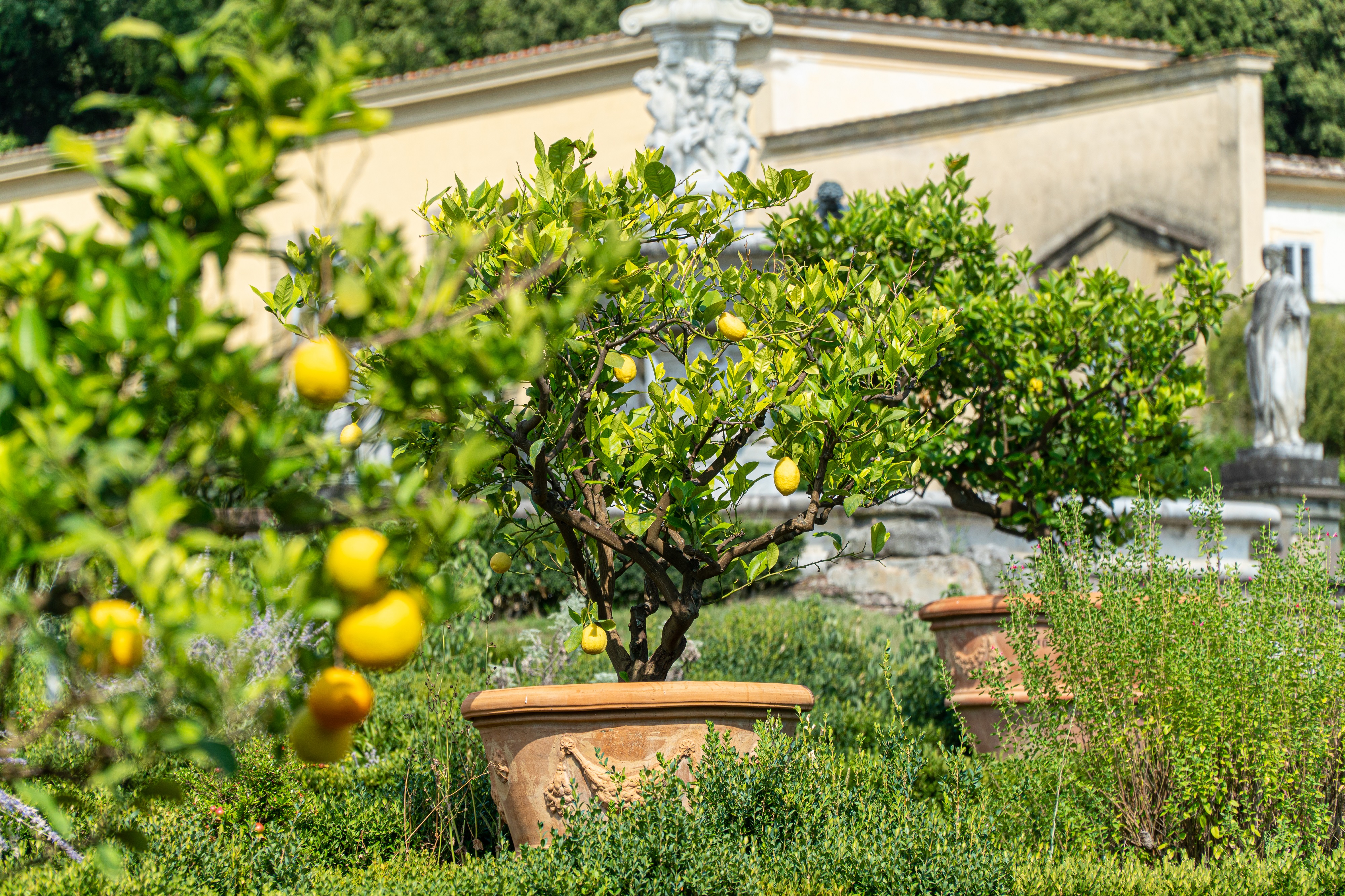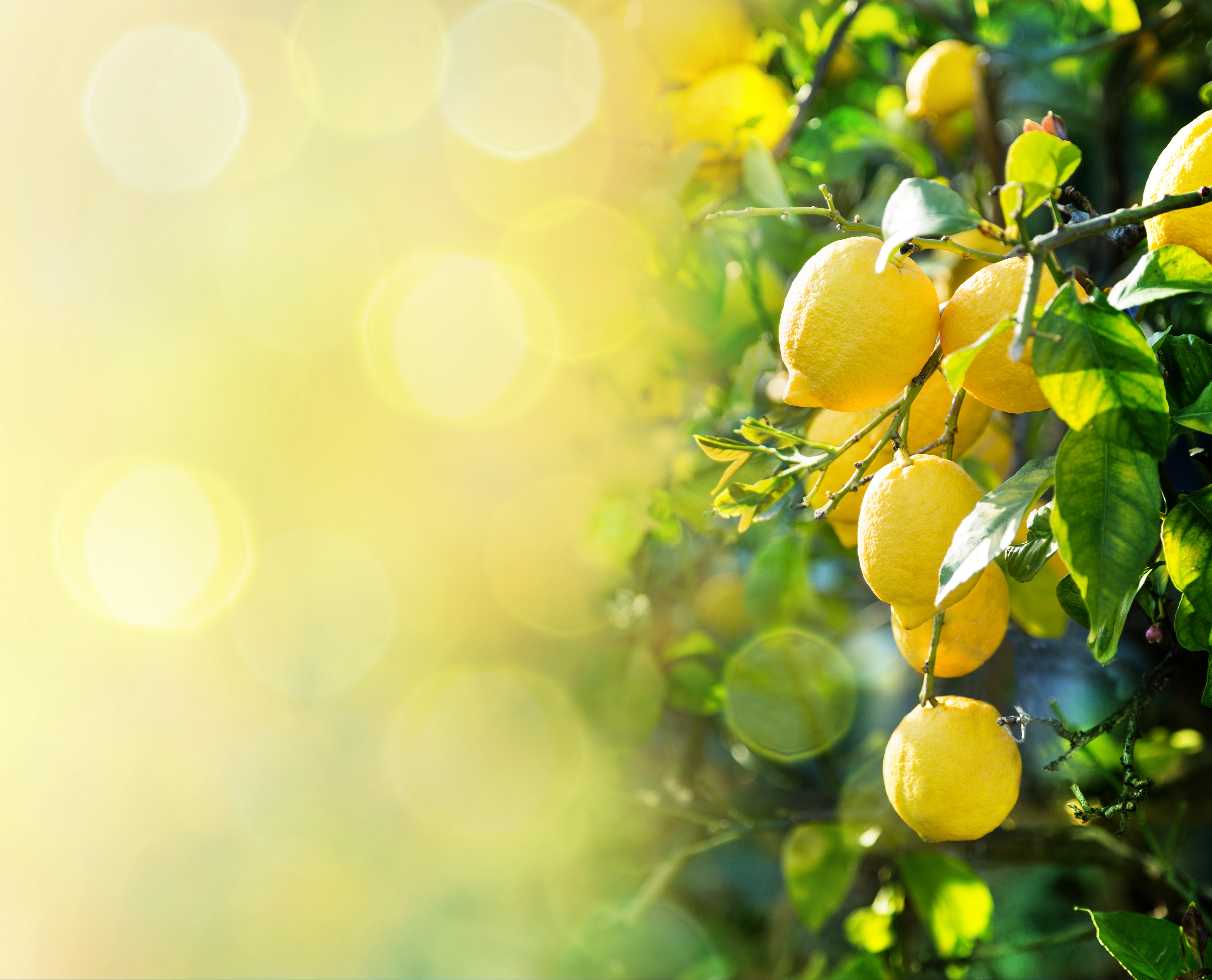Lemons for life
The lemon tree is a great addition to any garden. Not only is it beautiful to look at, with its lush green foliage and pretty white flowers, it also produces juicy fruit, which is available almost all year round, because it stays fresh on the tree for months. Here’s how to grow your own lemon tree/s and ensure you never run out of this gorgeous zesty fruit.

Used extensively in cocktails, for cooking and baking, as well as for medicinal, cleaning and cosmetic purposes, lemons are extremely versatile and it’s hard to imagine life without them. What better way to ensure you never run out than to grow your own?
As long as you look after the basics, lemon trees are easy – and rewarding - to grow. Depending on your needs and the space you have available, you may even consider planting more than one tree. Of course, if you only have a small garden or patio space or you’re planning to move in the near future, you may want to plant one in a pot; this is absolutely fine, as long as the soil is rich and well-draining, and the pot is big enough to accommodate the roots for many years to come.
Choosing your tree/s
When buying a tree from the nursery, look for a healthy tree with a nice straight stem and lush foliage. Check that there are no signs of disease or pest infestations – no curling of the leaves or spots on the underside of leaves.
These types tend to be readily available in South Africa:
- Eureka – a true lemon, bright yellow in colour, with an oblong shape and a shiny skin.
- Meyer – believed to be a hybrid between a lemon and an orange, it is slightly sweeter and less acidic than other varieties.
- Rough Skin – as the name suggests, it has a bumpy skin, which peels in a similar way to a naartjie.
- Genoa – smooth-skinned fruit with yellow skin and yellow-green flesh.
- Lisbon – medium-sized smooth-skinned fruit with yellow skin and pale-yellow flesh.
Location
Lemon trees love full sun. They prefer a warm climate with plenty of summer rainfall, but can do perfectly well in winter rainfall regions too. They are not comfortable with frost and wind when they’re young and tender, so will need some protection until established. Lemon trees will also flourish in coastal regions, as long as they are well-protected from a salty sea breeze.
Lemons prefer well-draining, slightly acidic soil, but can also thrive in clay soil that has been well prepared with plenty of organic matter and coarse river sand.
Planting
The planting hole/s must be well prepared. This first step is absolutely vital to the health of the tree, both now and in the future. Dig holes of about 600mm x 600mm x 600mm for each tree. Add compost, kraal manure and bonemeal (in the recommended quantities) to the soil you removed, ensuring it is well mixed. Fill the hole with water and allow it to drain away before adding most of the prepared soil back into the hole. Create a smaller hole in the middle, around the same size as the bag/pot your tree is in. Carefully remove the tree from the bag or pot and place the root ball into the hole. If you want to, at this point you can add a plastic tube for watering alongside the root ball, so that it will stick out of the ground about 5 – 10cm. Make sure you are covering the same amount of the stem as was covered in the bag or pot and no more. Fill in soil as needed and press down firmly around the tree. Next, tie the stem to a strong stake, taking care not to tie it so tightly that you damage the stem. Water the area thoroughly.
Watering
Water at least twice a week during dry hot spells and more frequently if your tree is in a pot. If you placed a tube into the ground, you can water the roots directly once or twice a week – less in rainy weather and a bit more in very hot, dry weather.
Water as soon as you see any signs of wilting on the leaves.
Feeding
Lemon trees can be quite greedy, so ensure you feed two or three times a year with good quality fertiliser that’s rich in potassium (for flowers and fruiting) and nitrogen (for the foliage). Always water well after feeding.

Care
If you notice that the leaves are yellowing, there could be three possible reasons: either the soil isn’t draining well (in which case you may need to add plenty of rich organic matter to the planting hole); you’re watering too much; or your soil is lacking nitrogen.
One of the best ways to protect against pests is by planting marigolds, as well as nasturtiums and lavender. If scale and aphids become a problem, spray the trees with a strong jet of water (if the tree is big and stable enough to handle the jet) or with a natural non-toxic spray, as you don’t want to poison your leaves or harm friendly critters. You may need to treat for ants, as they are attracted to the sweet secretion that aphids leave on the leaves and stem and then spread the aphid eggs to other plants.
With a bit of planning and preparation and continued (but simple) TLC, you can have an abundance of lemons in no time – and for life.
When life hands you lemons… make Limoncello!
Limoncello is the sweet liqueur made from the essence of lemon skins. It originates from Southern Italy, but has become popular in the UK, USA, New Zealand and even South Africa. It’s easy to make and delicious as an anytime drink, or as a “digestivoâ€.
Ingredients
- 10 lemons
- 1 litre bottle vodka (the best limoncello is made with grain alcohol, but if you can’t find that, use an inexpensive non-potato vodka, like Smirnoff).
- 700g caster or white sugar
- 750ml boiling water
Method
STEP 1
Pare the zest from all the lemons in long strips, but make sure you don’t include any of the bitter white pith. Put the zest in a large clean mason or consol jar and pour the alcohol over. Cover with a tightly fitting lid and leave for 2 weeks. Shake the jar up once or twice a day.
STEP 2
After the first 2 weeks, put the sugar into a heatproof bowl and pour the boiling water over, stirring until all the sugar has dissolved. Then add the vodka and peels, transfer to another jar (or more) and leave for another week, shaking the jar/s daily.
STEP 3
Strain into your sterilised bottles or jars, adding a few strips of the lemon zest to each bottle.
TIP:
Juice the peeled lemons and pour the juice into ice cube trays and freeze – you’ll have lemon juice whenever you need it.



